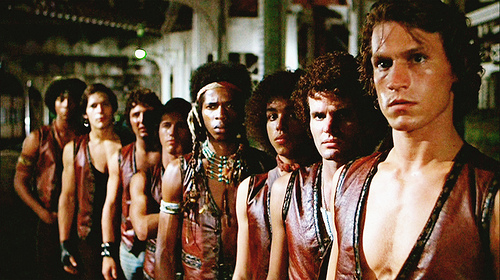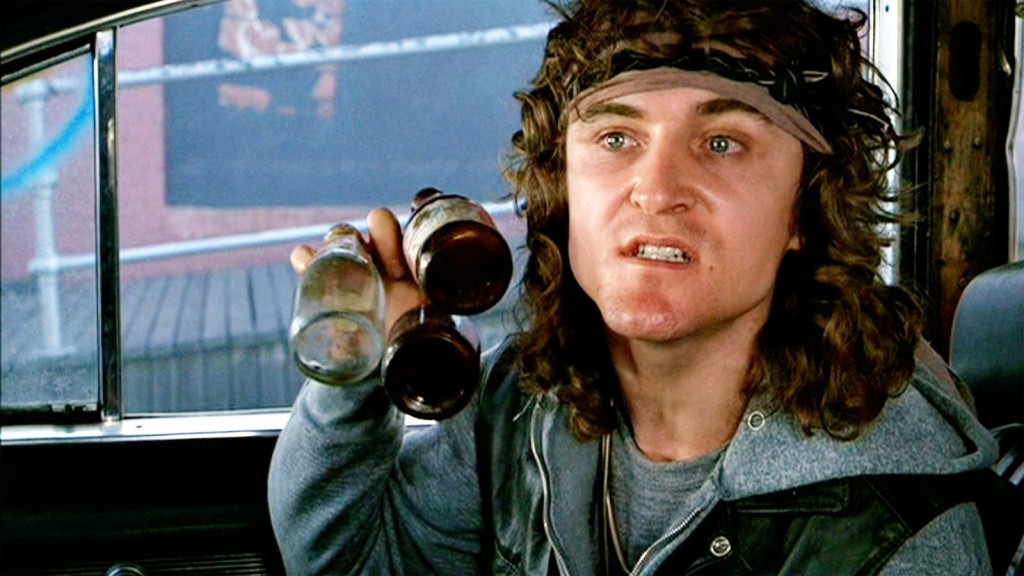
There was a time long ago when you couldn’t turn on your TV and not find The Warriors playing. It must’ve been the first movie ever syndicated or something because no matter what house you showed up at, what street you passed through, what party you attended, there was The Warriors. My memory of the film was formulated on these viewings. And I must admit, I haven’t seen it since. All I remember is that the movie had that indescribable something that made it unforgettable. Unforgettable good? Unforgettable bad? Unforgettably cheesy? It’s hard to say. Which is why today’s Ten Tips will be the first in the site’s history where I expect to note both good and bad screenwriting tips. I mean, there’s a roller-skating gang-leader. The movie was written and directed by Walter Hill (he worked off a screenplay by David Shaber, who adapted the script from Sol Yurick’s novel). Hill wrote and/or directed some good movies in his day like The Getaway, Hard Times and 48 Hours. Unfortunately, he had a really bad experience in 2000 with the movie Supernova. The studio wrestled the movie away from him, famously recutting it with numerous directors (even Francis Ford Coppola took a stab at it). The movie was famously awful and Hill said it was because it deviated heavily from his original darker vision (however, he claims to have never seen the film). Since then, Hill has worked mainly in the background of Hollywood, mostly in television.
1) ALWAYS WORKS – The wrongly accused protag! We will always love and root for the wrongly accused protagonist! Here, the Warriors have been wrongly accused of killing Cyrus, the beloved gang leader. It’s for this reason that everyone’s trying to take them out. Combined with The Warriors’ underdog status as a gang, it’s no wonder we root for them from the first page.
2) Don’t throw a female character in the script just to have a female character in the script – This tends to happen in macho male-driven films. The writer knows he needs a female lead but doesn’t want one, so he tosses one in there without any thought as to how or why she’s involved. This happens in The Warriors. The prostitute who hung with The Orphans just decides to join the Warriors for NO REASON. Come on now. As a writer, it’s your job to FIGURE OUT A WAY to get your female characters into the story naturally.
3) When the stakes are sky-high, simple scenes become awesome scenes – When the stakes are high (in this case, The Warriors can run into death at any corner), creating a simple objective with an obstacle in front of it can lead to a great scene. There’s a moment where the Warriors have to get to the train. But the Skinheads are blocking their way. We watch as the tension builds. They have to decide if they’re going to go or not. They finally make a run for it. A chase ensues. We’re on the edge of our seats wondering if they’ll be able to catch the train in time. It’s a simple scene, but one of the best in the movie. And it’s so simple!
4) If your characters are trying to outrun something, make sure you explain why they can’t just stay where they are – I had a problem with this here. Since there was no urgency in The Warriors (they didn’t need to be anywhere by a set time), I didn’t understand why they couldn’t just stay put and leave the next night when the city was less volatile. There are vague references to dangerous cops and gangs finding them. But it seemed to be a lot more dangerous trying to get home rather than staying put. This is why a ticking time bomb always works. It explains why your characters can’t stay put.
5) Is backstory bad? – Walter Hill has an interesting take on backstory. This is what he says: “I very purposely — more and more so every time I do a script — give characters no back story. The way you find out about these characters is by watching what they do, the way they react to stress, the way they react to situations and confrontations. In that way, character is revealed through drama rather than being explained through dialogue.”
6) Counterpoint – Backstory ain’t so bad – I see Hill’s point. Exploring characters through their actions is one of the best ways to develop them. More importantly, it keeps the story in the present, where movies work best. But these days, actors, producers and readers need more from their characters. They need to feel like those characters have lived a life. Backstory does that. The trick is to keep the backstory relevant and never give more than you have to.
7) Never underestimate the power of a simple plot – Hill, who was given a draft of The Warriors before writing his own draft, loved the “extreme narrative simplicity and stripped down quality of the script.” Looking back at it, I think that’s why the movie had such an impact on children, in addition to adults. A stripped down plot means every audience member, no matter what age, will be able to understand what’s going on. If you then want to up the adult appeal, add complexity through themes or social commentary or characters, whatever floats your boat.
8) Your main characters shouldn’t be wimps – One thing I realized when re-watching The Warriors was: THESE GUYS ARE WIMPS! They’re always running away. They’re only fighting when they’re cornered. If you have a macho hero-driven movie, make your hero a hero! Have him go after the prize instead of running or hiding. Obviously, in chase movies, your hero will be on the run. But when the opportunity arises and it makes sense, have them stand up for themselves. There wasn’t enough of that here.
9) Beware the Split-Up Paradox – In movies with group protagonists, there’s inevitably a time when the group splits up. My suggestion to you? Think twice before doing this. Watching The Warriors, I was all in for the first 40 minutes. Then, I noticed my concentration wandering. I wasn’t as into it. That’s when I realized the gang had split into three (or maybe four?) mini-groups. I wasn’t sure where any of them were or what they were trying to do. If you’re going to split up your characters, KNOW that this could be a problem and take counter-measures. Keep each mini-storyline focused (give them goals, makes sure we know where they are). And just like the overall story, try to give urgency to these tangents. If you don’t, our minds will start to wander.
10) Write your villain to steal the show – I read SO MANY boring villains with no personality. It’s no wonder I forget them the instant I put down the script. Honestly, I can count the number of memorable villains I’ve read in screenplays this year on one hand! To prevent this, write your villain to steal the show. Make SURE he’s memorable. Luther, despite having something like 5 minutes in the film, is a villain I still remember to this day. He’s small (unlike a typical villain). He’s a weasel. He’s a bully. He’s got a temper. But the big thing is, he just LOVES to have fun. He leads the charge when it’s time to get into trouble and he loves it. “Warrr-eee-orrrrs, come out to play-ye-yeeee.” If your villain ain’t stealing the show, you probably have a weak villain.


